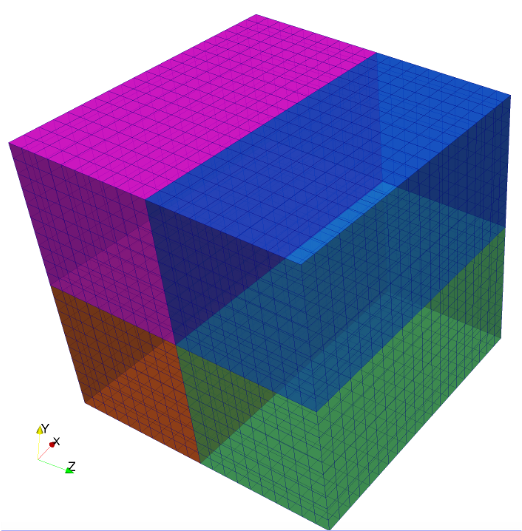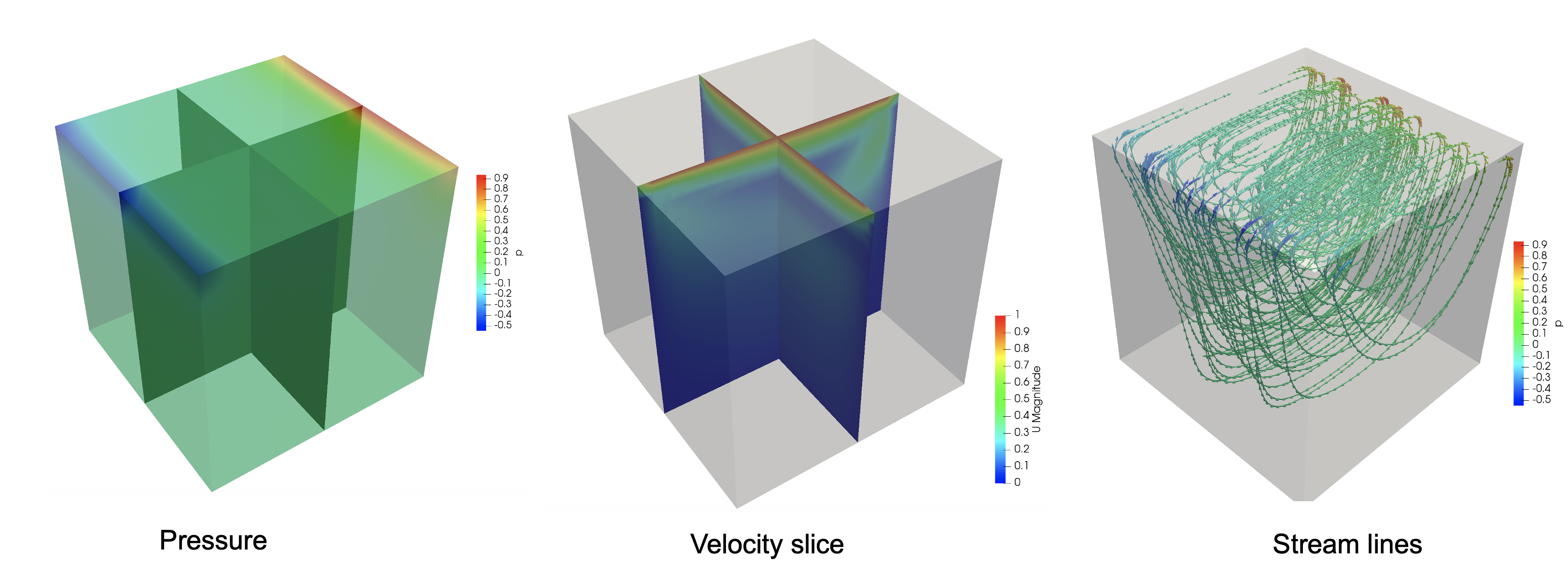Excercise
After we have mananged to solve for 2-D cavity flow, it’s time to try 3-D. And parralel proccessing!
3-D cavity flow
First, try to make a 3-D simulations. Start by copying the case to a new folder and to clean the case
cp -r cavity2D cavity3D
./clean.sh
Now these things have to happen
make the mesh 3-D by having cells in the z-direction
make sure the the front and back sides are not set to “empty” anymore
set proper boundary conditions for front and back
run it and hope for the best!
Getting fancy - let’s make a parallel run
Three-dimensional simulations need a lot of computing resources and thankfully OpenFoam is fully parallelized and very efficient in making parallel runs. The standard parallelization technique in OpenFoam is called “domain decompositon”. This means that the compuational domain is split into sub-domains and each sub-domain is send to one of the computional cores. As always, all of this is controlled via a dictionary file. This file is called system/decomposeParDict .
To get started we make a copy of our 3-D case.
cp -r cavity3D cavity3D_par
./clean.sh
Unfortunately, theree is no file system/decomposeParDict in our example case… Fortunately, there is probably an example file somewhere in all the provided tutorials. A simple way to find and copy one is this:
cd
find . -name "decomposeParDict"
./hydrothermalfoam-master/cookbooks/parallel_serial/fixedTfixedFluxPressure/2d_par/system/decomposeParDict
./hydrothermalfoam-master/cookbooks/parallel_serial/fixedTnoFlux/2d_par/system/decomposeParDict
./hydrothermalfoam-master/cookbooks/3Dbox_par/system/decomposeParDict
./hydrothermalfoam-master/cookbooks/helloworld_par/system/decomposeParDict
cp ./hydrothermalfoam-master/cookbooks/helloworld_par/system/decomposeParDict $HOME/HydrothermalFoam_runs/cavity3D_par
Now open this file and edit it; it should look like this
1/*--------------------------------*- C++ -*----------------------------------*\
2========= |
3\\ / F ield | OpenFOAM: The Open Source CFD Toolbox
4 \\ / O peration | Website: https://openfoam.org
5 \\ / A nd | Version: 7
6 \\/ M anipulation |
7\*---------------------------------------------------------------------------*/
8FoamFile
9{
10 version 2.0;
11 format ascii;
12 class dictionary;
13 location "system";
14 object decomposeParDict;
15}
16// * * * * * * * * * * * * * * * * * * * * * * * * * * * * * * * * * * * * * //
17
18numberOfSubdomains 4;
19
20method scotch;
21
22simpleCoeffs
23{
24 n (2 1 2);
25 delta 0.001;
26}
27// ************************************************************************* //
The domain is split into four equally sized blocks. Again details on this can be found in the OpenFoam User Guide.

Next you need to modify the run.sh script to invoke a parallel run.
cp run.sh run_par.sh
It should look like this:
1#!/bin/sh 2cd ${0%/*} || exit 1 # Run from this directory 3 4# Source tutorial run functions 5. $WM_PROJECT_DIR/bin/tools/RunFunctions 6 7application=`getApplication` 8 9./clean.sh 10runApplication blockMesh 11runApplication decomposePar 12runParallel $application 13reconstructPar
Now it’s time to run the case. Results should look like this:

Fig. 10 Results of the 3-D parallel cavity flow simulation.